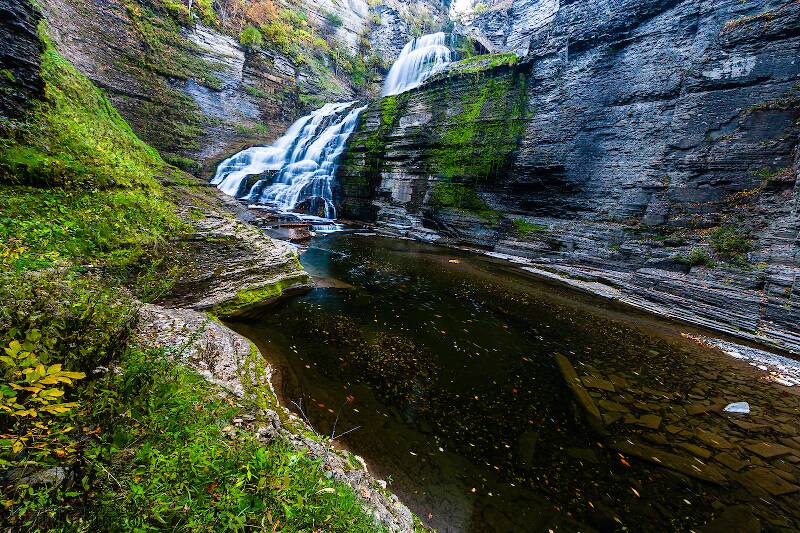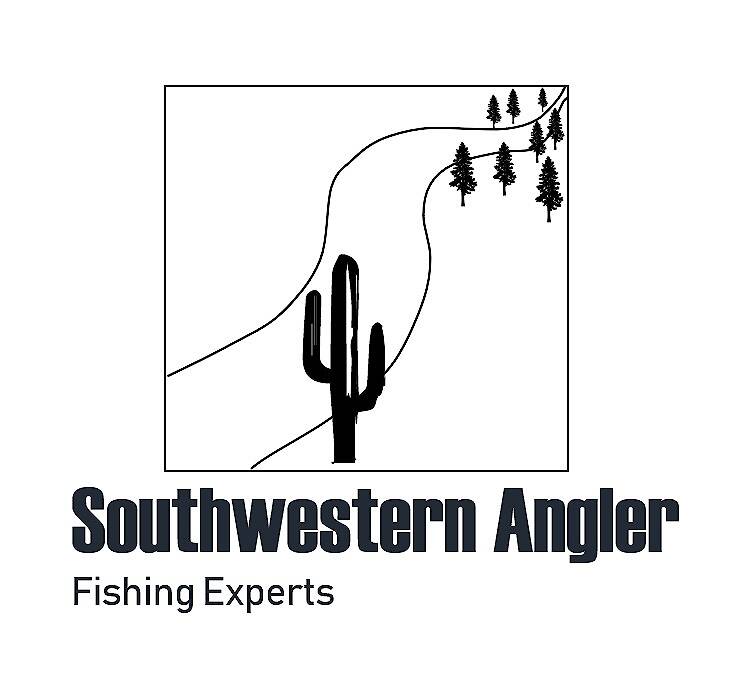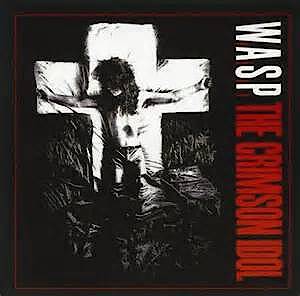
Blue-winged Olives
Baetis
Tiny Baetis mayflies are perhaps the most commonly encountered and imitated by anglers on all American trout streams due to their great abundance, widespread distribution, and trout-friendly emergence habits.
Featured on the forum

This specimen keys to the Epeorus albertae group of species. Of the five species in that group, the two known in Washington state are Epeorus albertae and Epeorus dulciana. Of the two, albertae has been collected in vastly more locations in Washington than dulciana, suggesting it is far more common. On that basis alone I'm tentatively putting this nymph in albertae, with the large caveat that there's no real information to rule out dulciana.

Troutnut is a project started in 2003 by salmonid ecologist Jason "Troutnut" Neuswanger to help anglers and
fly tyers unabashedly embrace the entomological side of the sport. Learn more about Troutnut or
support the project for an enhanced experience here.
Flyfishen24
Posts: 6
Posts: 6
Flyfishen24 on Mar 6, 2017March 6th, 2017, 6:22 am EST
What are advantages of using a sinking line ? When and where would I use it over a floating line? Thank you.
PaulRoberts on Mar 7, 2017March 7th, 2017, 12:21 am EST
Still water.
P_SWAngler on May 2, 2018May 2nd, 2018, 4:17 am EDT
I use a sinking line when I fish streamers and want to get them down into deeper water as fast as possible. Since the line will be submerged with the fish you are trying to catch, it is a good idea to get a dark colored one (most sinking lines you find are colored this way), I like a dark brown.
Hope this helps!
Hope this helps!
Jmd123 on May 2, 2018May 2nd, 2018, 4:28 am EDT
As Paul says, lakes and ponds, where you need to get some depth...having said this, I actually use a floating line with weighted streamers most of the time. The advantage to this is you can switch to a dry fly if surface feeding action commences (and I usually try to time my stillwater fishing to these times, and make sure have some grasshopper and/or cricket imitations to twitch, later in the season generally). But if you really need to get down deep, a sinker is the way to go.
Jonathon
Jonathon
No matter how big the one you just caught is, there's always a bigger one out there somewhere...
Adirman on May 2, 2018May 2nd, 2018, 12:04 pm EDT
I agree with Johnathon in that I use floating line exclusively due to the versatility and ability to change up and hit the surface when new need be. I’m sure sinking line has its place and if in as fishing deep and /or still water exclusively, I may indeed use it. Or, if I were salmon fishing it may be useful; otherwise , I’m sticking with floating line and adding weight if need be ðŸ˜
Wbranch on May 3, 2018May 3rd, 2018, 2:24 pm EDT
I have fly fished for over fifty five years and owned one full sinking line in all that time. I used it a season or two as a young man, took it off the reel, and never bought another full sinker. However I have had many sinking tip lines with different lengths of the sinking portion and different densities which controls the inches per second of sink. Sinking tips are really nice if you fish streamers often and the rivers you fish are swift and deeper than say 3'. If you use a sink tip with about a 6' - 8' sink section and a short leader you can get your fly in the strike zone in a few seconds after the fly hits the water. They are also nice if you want to nymph but don't want to attach split shot to your leader. Also you can cast conventionally and not have to resort to roll casting BB's. Plus the fly hits the water with more delicacy and still will sink pretty quickly. Of course if the water is really swift and over 3' deep there is just nothing like adding as many BB's as necessary to get the fly rolling right near the bottom.
Catskill fly fisher for fifty-five years.
Jmd123 on May 4, 2018May 4th, 2018, 8:50 am EDT
I actually have a Class VI sink-tip 5-weight line I have not yet deployed (means 6" per second sink rate if you didn't already know that). I have one specific body of water in mind, one that I have mentioned and posted pics of many times before - Reid Lake. This is essentially a kettle hole lake, with very little shallows and steep drop-offs into deep water and a maximum depth of 38 feet. I do all my fishing here with a floating line, and either dry flies when they are surface feeding or streamers (typically a #6 KBF) with weighted eyes. I can get to a depth of probably 10-12' if I let the fly sink for a while, and I have caught lots of fish at these depths, up to and including a rainbow of 18 1/2" and a yellow perch of 13 3/4". In other words, some nice fish!
So why the sink-tip line? Well, a few years ago I went into the fishing shop where I typically have my fish filleted (I know, I need to learn myself), Wellmans at the mouth of the Au Sable, and they said someone else had caught some biiiiig perch in there. They showed me about a half-dozen scaled fish sitting in ice..."No way, those are walleye! Oh my God, they ARE perch!!" Like 15-17 inchers..."Who? HOW? WHERE??" He was a bottom bait fisher who came in with a float tube, and still fished in the deeper waters of the lake. Alright, if he can do that with bait, I can do it with flies! But I still have yet to use it because I usually do well enough (or better than well) with the floating line and rig I'm already using.
Then again...is there a two-foot rainbow lurking around down there somewhere? Could well be - this lake has one of the biggest minnow populations I have ever seen! Including golden shiners up to 8"...and the best news is they are now planting BROWNS too, so in three years or so I expect to be hooking into some "alligators" out there! Perhaps with that sinking line? Who knows...our trout season has just begun. Lots of fun to come!
Jonathon
So why the sink-tip line? Well, a few years ago I went into the fishing shop where I typically have my fish filleted (I know, I need to learn myself), Wellmans at the mouth of the Au Sable, and they said someone else had caught some biiiiig perch in there. They showed me about a half-dozen scaled fish sitting in ice..."No way, those are walleye! Oh my God, they ARE perch!!" Like 15-17 inchers..."Who? HOW? WHERE??" He was a bottom bait fisher who came in with a float tube, and still fished in the deeper waters of the lake. Alright, if he can do that with bait, I can do it with flies! But I still have yet to use it because I usually do well enough (or better than well) with the floating line and rig I'm already using.
Then again...is there a two-foot rainbow lurking around down there somewhere? Could well be - this lake has one of the biggest minnow populations I have ever seen! Including golden shiners up to 8"...and the best news is they are now planting BROWNS too, so in three years or so I expect to be hooking into some "alligators" out there! Perhaps with that sinking line? Who knows...our trout season has just begun. Lots of fun to come!
Jonathon
No matter how big the one you just caught is, there's always a bigger one out there somewhere...
Adirman on May 4, 2018May 4th, 2018, 10:35 pm EDT
Sounds great but you’d probably need a full sinking line to get all the way down there wouldn’t you?
Jmd123 on May 5, 2018May 5th, 2018, 7:39 am EDT
To thirty-eight feet perhaps, but if I can just get another 5-10' out of the sinker that puts me in the face of yet more fish...much of the lake is 15-25 feet deep, and I imagine if I can get within about 5-10 of the bottom almost anywhere I will pick up fish. The bottom, by the way, is covered in thick - and I mean THICK - weed beds of may species (all native that I can see) that I regularly sample (not intentionally!) with my kayak anchor. As in about 5 lbs. of salad and bottom peat and muck...so you really don't want to dredge the bottom with a fly line but stay not far above it. Perch and trout look up, and down there they're not going to be looking down into weeds and muck for food, but perhaps some juicy nymphs or baitfish just above it. Well, a few years ago I pulled one out that was full of snails (must have been some strain from France!):
http://www.troutnut.com/topic/8972/Biggest-of-the-year-from-the-kayak-on-a-KBF-in-November#45070
Highly fertile environment, now getting stocked with brown trout too so should see some excellent growth potential there. But...it's most fun on a dry fly, later in the season when they come up top to feed and are suckers for hoppers and crickets. But also I've caught way too many nice fish out there on streamers to ever fail to be prepared for that.
If you guys are ever in the area, it's about a mile walk over rolling (not steep at all) hills through a magnificent forest of hemlock and northern hardwoods (so the beauty can inspire you to make it though the exhaustion). A small kayak or float tube is perfect, and if you are lacking I can even borrow one for you from my neighbor (we have this "friendly neighborhood kayak exchange" - when one of us needs an extra, we lend). Though I don't want to think about it now, this place is truly excellent fishing, and magnificent scenery, in the fall. Gonna try soon this spring before the mosquitos come out (i.e., don't go there in the summer!).
Tight lines, fellas, and if you have success you know how much we all love pictures (of pretty scenery too - wildflower time!).
Jonathon
http://www.troutnut.com/topic/8972/Biggest-of-the-year-from-the-kayak-on-a-KBF-in-November#45070
Highly fertile environment, now getting stocked with brown trout too so should see some excellent growth potential there. But...it's most fun on a dry fly, later in the season when they come up top to feed and are suckers for hoppers and crickets. But also I've caught way too many nice fish out there on streamers to ever fail to be prepared for that.
If you guys are ever in the area, it's about a mile walk over rolling (not steep at all) hills through a magnificent forest of hemlock and northern hardwoods (so the beauty can inspire you to make it though the exhaustion). A small kayak or float tube is perfect, and if you are lacking I can even borrow one for you from my neighbor (we have this "friendly neighborhood kayak exchange" - when one of us needs an extra, we lend). Though I don't want to think about it now, this place is truly excellent fishing, and magnificent scenery, in the fall. Gonna try soon this spring before the mosquitos come out (i.e., don't go there in the summer!).
Tight lines, fellas, and if you have success you know how much we all love pictures (of pretty scenery too - wildflower time!).
Jonathon
No matter how big the one you just caught is, there's always a bigger one out there somewhere...
Jmd123 on May 5, 2018May 5th, 2018, 7:42 am EDT
BTW Matt, what exact leader set-up would you use for a sink-tip (length and strength)? There are other places I might deploy this line (Tawas Bay, Cooke Pond, etc.). I am talking about a 5-weight line and #6 streamers weighted with dumbbell eyes.
Jonathon
Jonathon
No matter how big the one you just caught is, there's always a bigger one out there somewhere...
Wbranch on May 5, 2018May 5th, 2018, 12:48 pm EDT
Pretty light rod for throwing any dumbbell eye streamers. I never go less than #6. It kind of depends on how big the fish are. For river work I would rarely go longer than a 7' tapered leader with a 3X tippet. It is pointless to ever go lighter than a 3X leader/tippet. We aren't looking for delicacy when fishing streamers. You will likely be imparting movement to the fly in the manner of long and short strips, jerks, etc and the fly will be darting through the water column. I have caught hundreds of larger trout on streamers and never, ever, use leader/tippet lighter than 2X. Normally I nail knot an older leader that I cut down to 5' with a really heavy butt (.023"-.024") and tie on a Raven XXS micro swivel to the end. Then clinch knot on a piece of 1X 12" - 15" long.
Jon, Those suggestions are for water with 1' - 3' visibility. If the water is high and really stained I just put on a piece of 0X 15" - 20" long.
There is another option for those fellows who don't want to spend the $60 - $80 for a good sink tip line. Rio, and other leader makers, manufacture a full sinking leader. The Rio leader has a loop on the butt end and it comes in a couple of lengths, sink rates, and break strengths. It is a dark green color for most of it's length. The last 10" - 12" is clear mono. As soon as I put one of those leaders on I tie one of those micro rings to the end and then clinch on a 1X tippet about 10" long. They cost around $12 so you can buy 3 or 4 of varying lengths and sink rates and still spend less than a traditional sink tip line.
Jon, Those suggestions are for water with 1' - 3' visibility. If the water is high and really stained I just put on a piece of 0X 15" - 20" long.
There is another option for those fellows who don't want to spend the $60 - $80 for a good sink tip line. Rio, and other leader makers, manufacture a full sinking leader. The Rio leader has a loop on the butt end and it comes in a couple of lengths, sink rates, and break strengths. It is a dark green color for most of it's length. The last 10" - 12" is clear mono. As soon as I put one of those leaders on I tie one of those micro rings to the end and then clinch on a 1X tippet about 10" long. They cost around $12 so you can buy 3 or 4 of varying lengths and sink rates and still spend less than a traditional sink tip line.
Catskill fly fisher for fifty-five years.
TimCat on May 17, 2018May 17th, 2018, 12:34 pm EDT
I use a 7' polyleader made by orvis... basically a piece of sinking fly line that you attach to your line... it's like adding a sinking tip to your floating line kind of. It's looped at one end so you can attach it like other leaders to a perfection loop, and then I tie another perfection loop on the other end to have another loop-to-loop connection.. It rolls over pretty good, but that really isn't an issue, like mentioned above. I use it with my 6 weight for nymphing deeper and faster water, and for streamer fishing on small lakes. It's pretty nice because you don't need to worry about switching reels or carrying two rods. It won't get you down 20+ feet quickly, but it's great for a quick changeup on a river with a lot of different depths and for when you want to get down quick with a streamer.
If you fish a lot of stillwaters, a sinking line seems like a good thing to get familiar with, but in my case, I have no use for them really.
If you fish a lot of stillwaters, a sinking line seems like a good thing to get familiar with, but in my case, I have no use for them really.
"If I'm not going to catch anything, then I 'd rather not catch anything on flies" - Bob Lawless
Adirman on May 17, 2018May 17th, 2018, 1:21 pm EDT
So why not just add shot I always wonder 🤔
Jmd123 on May 18, 2018May 18th, 2018, 1:46 am EDT
Shot will get you down, as will weighting your fly, but you still have the floating line pulling on it to keep it up. A sinking line or sink tip pulls the fly down into the water column instead of holding it up like a bobber, so you can go deeper. If I do decide to plumb the 25-30' depths of Reid Lake, I'm certain I'll need the sinker. For perch the size of walleye and a rainbow-colored submarine as possibilities I have to give it a try sometime!
Jonathon
Jonathon
No matter how big the one you just caught is, there's always a bigger one out there somewhere...
Adirman on May 18, 2018May 18th, 2018, 6:33 am EDT
I hear you, thing is, when you’re fishin that deep with sinking line you’re not casting and retrieving too much I’d imagine ; takes awhile to pull all that line up 😆
Quick Reply
Related Discussions
Topic
Replies
Last Reply
2
May 17, 2018
by Subway
by Subway
2
Apr 25, 2016
by Afishinado
by Afishinado







